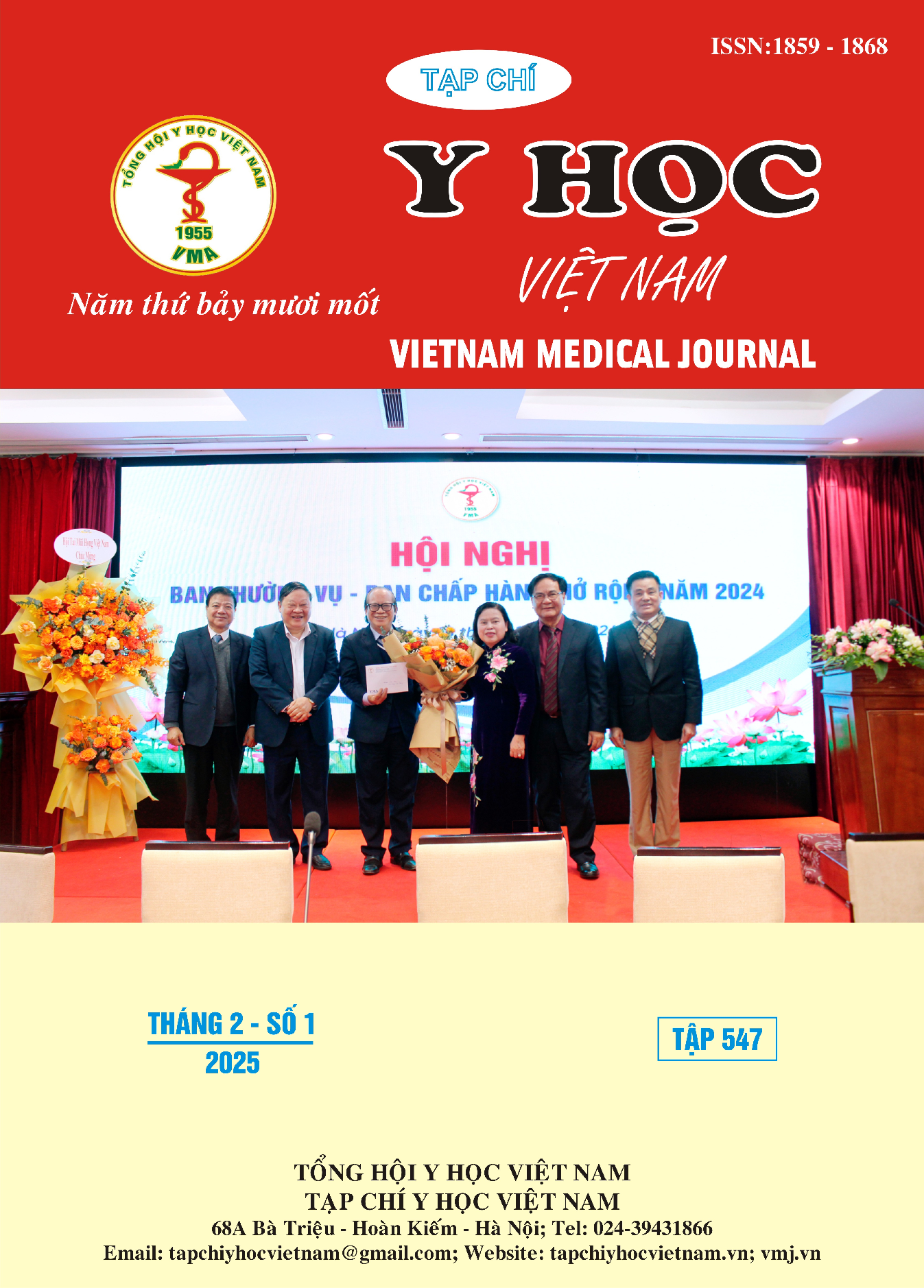STUDY ON THE EFFECTIVENESS AND SAFETY OF THROMBOLYSIS COMBINED WITH MINIMALLY INVASIVE SURGERY IN THE TREATMENT OF PRIMARY BRAIN HEMORRHAGE AT THE INTENSIVE CARE DEPARTMENT OF THANH NHAN HOSPITAL
Main Article Content
Abstract
Background: Evaluating the effectiveness and safety of using thrombolytic drugs combined with minimally invasive surgery in the treatment of primary cerebral hemorrhage at the Intensive Care Department of Thanh Nhan Hospital from June 2021 to December 2024. Methods: Descriptive study on 35 patients diagnosed with primary cerebral hemorrhage treated at the Intensive Care Unit of Thanh Nhan Hospital from June 2021 to December 2024, patients were treated with catheter placement to drain the hematoma combined with thrombolytic drugs. Result: The study group had 35 patients, of which 43% were male, 57% were female, the patients in the group mainly had a history of hypertension (77%), diabetes (45%), GCS at admission mainly: 13-15 points: 45.7%; 5-8: 34.3%. Patients without mechanical ventilation at admission: 60%, patients who received early intervention within 12 hours accounted for 86%, the largest hematoma volume before treatment: 98±30.5, the smallest volume after treatment: 8±2.5. Total dose of thrombolytic: 9 doses accounted for 68.6%. Recovery level according to mRS at discharge: 0-3: 31%, 4-6: 69%; 1 month: 0-3: 55%, 4-6: 45%; 3 months: 0-3: 73%, 4-6: 27%. Of the 35 patients studied: 22 patients were discharged, accounting for 63%, length of hospital stay (days): 15.68±8.13. Complications of hematoma drainage were mainly posterior inflammation after cerebral hemorrhage, accounting for 28.5%, without encephalitis. Conclusion: Applying thrombolytic drugs combined with minimally invasive surgery in the treatment of primary cerebral hemorrhage significantly improves the patient's neurological outcome
Article Details
Keywords
Primary cerebral hemorrhage, minimally invasive surgery, thrombolysis
References
2. Cordonnier C, Demchuk A, Ziai W, Anderson CS. Intracerebral haemorrhage: current approaches to acute management. Lancet. 2018;392:1257–1268. doi: 10.1016/S0140-6736(18)31878-6.
3. Mendelow AD, Gregson BA, Rowan EN, Murray GD, Gholkar A, Mitchell PM; STICH II Investigators. Early surgery versus initial conservative treatment in patients with spontaneous supratentorial lobar intracerebral haematomas (STICH II): a randomized trial. Lancet. 2013;382:397–408. doi: 10.1016/S0140-6736(13)60986-1.
4. Krishnamurthi, RV ∙ Feigin, VL ∙ Forouzanfar, MH ∙ et al (2013). Global and regional burden of first-ever ischemic and haemorrhagic stroke during 1990–2010: findings from the Global Burden of Disease Study 2010. Lancet Glob Health. 2013; 1:e259-e281.
5. Hanley, D.F. ∙ Lane, K ∙ McBee, N ∙ et al (2017). Thrombolytic removal of intraventricular haemorrhage in treatment of severe stroke: results of the randomized, multicentre, multiregion, placebo-controlled CLEAR III trial. Lancet. 2017; 389:603-611.
6. Hanley, Richard E Thompson et al (2019). Efficacy and safety of minimally invasive surgery with thrombolysis in intracerebral haemorrhage evacuation (MISTIE III): a randomized, controlled, open-label, blinded endpoint phase 3 trial. The Lancet, p1021-1032.
7. Wendy C Ziai, Nichol McBee et al (2019). A randomized 500-subject open-label phase 3 clinical trial of minimally invasive surgery plus alteplase in intracerebral hemorrhage evacuation (MISTIE III). Int J Stroke; 14(5):548-554.
8. Lương Quốc Chính (2017). Nghiên cứu hiệu quả kết hợp dẫn lưu và sử dụng Ateplase não thất trong điều trị chảy máu não thất có giãn não thất cấp, Luận văn tiến sĩ, Đại học y Hà Nội.


